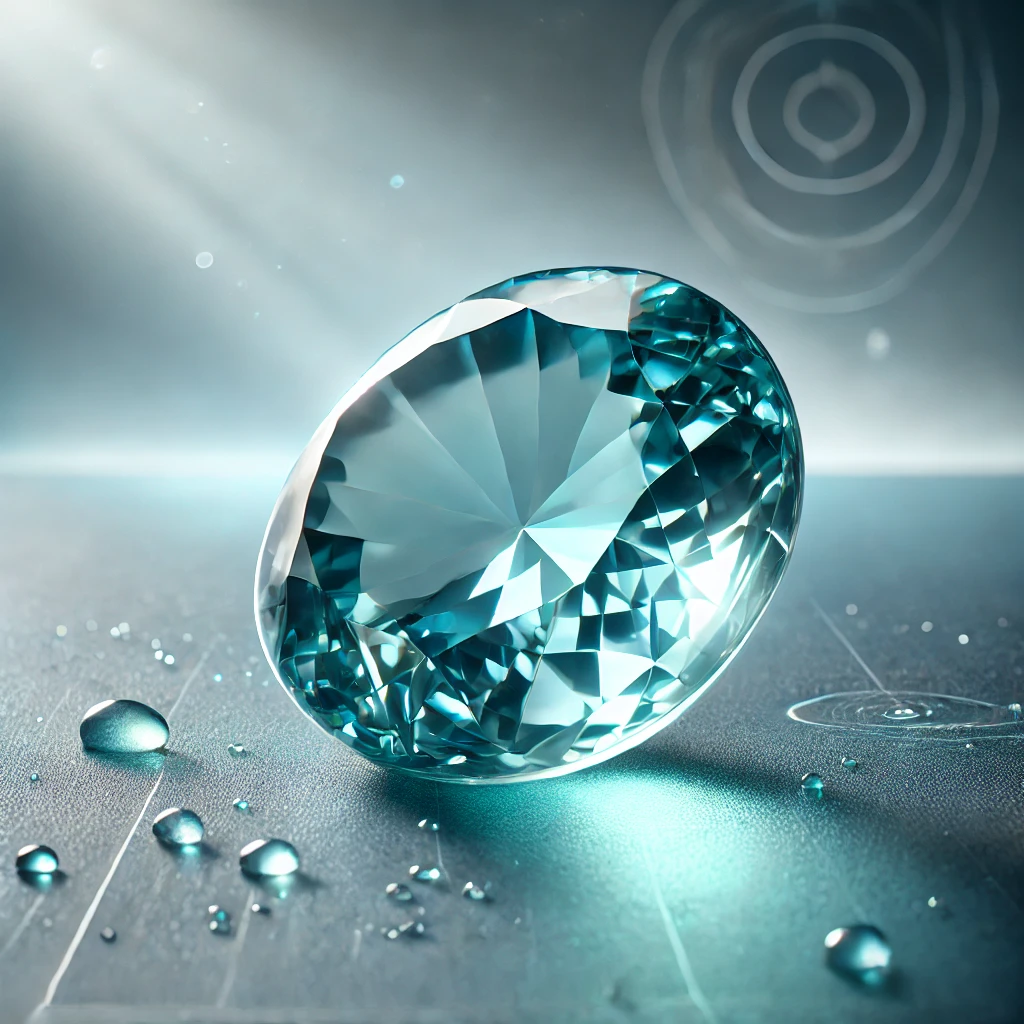Aquamarine: Stone of Serenity, Clarity & Communication
Overview and Meaning
Aquamarine is a light blue to blue-green variety of Beryl, known for its soothing energy, clarity, and connection to the ocean. Often called the “Stone of the Sea,” Aquamarine symbolizes calmness, courage, and clear communication.
This crystal is associated with peace, intuition, and self-expression, making it a favorite for meditation, emotional healing, and enhancing truthfulness.
1. History and Mythology
- The name Aquamarine comes from the Latin words aqua (water) and marina (of the sea), reflecting its oceanic hues.
- Ancient Greek and Roman sailors believed Aquamarine protected them from storms and sea dangers.
- In Egyptian and Sumerian cultures, it was considered a sacred stone of the gods.
- Medieval healers used Aquamarine to treat throat issues and enhance communication.
- It has long been associated with mermaids, who were said to treasure it as a talisman of the sea.
2. Healing and Metaphysical Properties
✅ Calmness & Stress Relief – Encourages emotional balance, peace, and relaxation.
✅ Courage & Inner Strength – Helps overcome fears, self-doubt, and anxiety.
✅ Clear Communication – Enhances self-expression, truthfulness, and confidence.
✅ Spiritual Connection & Intuition – Strengthens psychic abilities and deepens meditative states.
✅ Chakra Connection – Primarily linked to the Throat Chakra, supporting authenticity and honest dialogue.
Aquamarine is widely used in meditation, energy healing, and emotional balancing practices.
3. Variations and Colors
Aquamarine ranges from pale blue to deep sea-green, with variations in clarity and intensity:
- Light Blue Aquamarine – Enhances tranquility, patience, and emotional healing.
- Deep Blue Aquamarine – Strengthens intuition, clarity, and psychic abilities.
- Greenish Aquamarine – Balances the heart and mind, promoting harmony and courage.
The most valuable Aquamarine stones are deep blue with high transparency.
4. Uses and Jewelry
- Aquamarine is popular in rings, pendants, earrings, and bracelets, admired for its cool, soothing hues.
- It is often used in meditation spaces and spiritual rituals to enhance clarity and peace.
- Many people wear Aquamarine to improve confidence in public speaking and communication.
- Sailors and travelers have historically carried Aquamarine amulets for protection and safe passage.
5. Care and Maintenance of Aquamarine
5.1 How to Cleanse and Charge Aquamarine
- Water Cleansing: Can be rinsed with lukewarm water, but avoid harsh chemicals.
- Sunlight Charging: Brief exposure to morning sunlight can energize the stone, but prolonged exposure may fade the color.
- Moonlight Charging: Placing Aquamarine under a full moon enhances its calming and intuitive properties.
- Smudging: Use sage, palo santo, or incense smoke to clear stagnant energy.
- Selenite or Quartz Charging: Storing it near Selenite or Clear Quartz keeps its energy vibrant.
5.2 Storing and Handling
- Aquamarine has a Mohs hardness of 7.5–8, making it durable but still susceptible to scratches and fractures.
- Store separately from harder stones like Diamonds and Sapphires to prevent damage.
- Avoid exposure to extreme heat, harsh detergents, or ultrasonic cleaners.
Conclusion
Aquamarine is a stone of serenity, courage, and clear communication, making it an excellent choice for those seeking emotional balance, self-expression, and spiritual insight. Whether worn as jewelry, used in meditation, or carried as a talisman, Aquamarine offers a soothing and uplifting presence in daily life.

